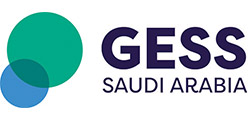Investing in the next generation: the value of Gulf education
Education — at the heart of every growing economy — is proving to be a boom for developers seeking alternatives to traditional real estate amid a significant increase in demand for private schooling.
Real estate investors and developers in the Gulf have traditionally focused on four asset classes — residential, offices, retail and hotels. But as those sectors become saturated, others such as education, healthcare, infrastructure, logistics and student housing have become more attractive in recent years.
The figures explain why. More than 680 schools are needed in the Middle East cities of Dubai, Abu Dhabi, Jeddah, and Riyadh by 2020 — 40 percent of which will be private — according to consultancy firm JLL in its report entitled School’s In.
“The shortage of quality income producing assets in traditional sectors and declining returns in some locations has further prompted the interest in alternative asset classes,” JLL head of MENA research Craig Plumb says.
“With new investment vehicles facilitating the investment in schools, alternative investments diversify the investor portfolio and have the potential to improve the overall risk-return profile. Both retail investors and institutions are seeking greater exposure to non-correlating alternative investments that provide consistent income with low volatility.”
With a growing school-age population in the region, at least 40 percent of those schools being built in Dubai, Abu Dhabi, Jeddah, and Riyadh will be new private schools, according to JLL.
The Federal Competitiveness and Statistics Authority says 75 percent of students in the UAE attend private schools.
While the percentage of pupils in private education is somewhat lower in Saudi Arabia, it has been the fastest growing sector of the market in recent years, increasing from 5 percent of new enrolments in 2011 to 11 percent in 2014. The growing demand for private schools has resulted in strong financial returns.“Education is regarded as a lucrative business opportunity,” Plumb says.
“The school age population is growing and this is the main attraction for the education sector. In Dubai, for example, we expect the expatriate population to grow at an average rate of 4.7 percent over the next five years, and as expatriate workers move in with their families, this creates demand for private education facilities.”
JLL says a total of 53 new schools are likely to be required in Dubai by 2020, with 36 of these being private schools. A total of 44 new schools will be required in Abu Dhabi over the next five years, split almost 50:50 between the public and private sectors.
Ashwin Assomull, managing director at Parthenon-EY, says education facilities are also important for investors who stick to traditional residential developers; in order to attract the “right kinds of people” to a project, it needs to have the right infrastructure, which includes retail, hospitals, schools and nurseries.
“Traditionally what has happened is they (developers) have rented out the land to folks to come in and run a school and they have even built the school and rented the building out. But now we see a number of property companies across the world doing it, because they understand that it’s a commercially viable thing to do, to run and operate a school,” Assomull says.
Sally Jeffery, PwC Middle East Partner, Education Sector Leader — Middle East, describes the predicted growth figures as “bullish” and stresses the importance of fully understanding the industry before investing.
“Investors are definitely looking at education. I have had a lot of meetings with investors who haven’t looked at education before, but are interested in it [now]. I’m at pains to point out that education is a great investment but don’t go into it without a good understanding of what it takes to offer a profitable school.
“Running a profitable school is quite hard. You’ve got to have the right location, the maturity of the residential area is really important, and the socio-economic mix of the area is important — what nationalities are going to move into those houses.”
Investors need to also consider the fact that the industry is heavily regulated, Assomull warns.
According to a report prepared by Abu Dhabi Education Council (ADEC) in 2015, private schools in Abu Dhabi took in $800m in profit over the preceding four years, while invigorated investment in the sector saw 45 new private schools being built in the emirate between 2010-2015 at a cost of $620m.
“You need to understand the regulation [and] have the right land and a good location, and that usually acts as a barrier. You have negative working capital — i.e. you get paid your fees at the beginning of the term as a school operator and you end up paying your teachers on a monthly basis.
“There are a number of drivers that are pushing real estate folks to — rather than outsourcing or getting an education provider to come in and run a school — actually doing it themselves because there is some really strong financial returns.”
In an acknowledgement of its growing importance, companies have started to specialise in building schools. In Malaysia, for example, groups such as Paramount and Taylor’s started off in real estate and have not only moved into schools but are also investing in government and higher education colleges.
“In Dubai itself, there is a company called Fortes Education and the group started off as a real estate company but is actually focussing more on [developing] schools than education,” he says.
“One of the largest developers in Dubai, the Sobha Group, has built its own school called Hartland and is also bringing in a school called North London Collegiate which is a top British Plus IB [International Baccalaureate] School, to Dubai.”
JLL says the demand for private education is being driven by both the growth in the number of expatriates and the desire of more national families for better quality education for their children.
“The education sector has sparked the interest of many real estate investors right across the MENA region,” Plumb says.
“Private equity firms in particular, have been very active in recent years, and they will continue to play a pivotal role in the expansion of the private education sector here.”
Jeffery also attributes the growing demand for private school to parents assessing the quality of education.
“It’s partly because the private schools are using quite mature, modern curricula — the UK, IB, American — these are all quite advanced,” she says.
“The public [education] systems are still using national curricula, which have got a lot of reform to go through still. They are not as mature. The curricula content and the pedagogy is very different. They are putting a lot of effort into modernising their curricula but it's very difficult to do it quickly; that takes years.”
Jeffrey does, however, say that demand is “slowing a bit”, particularly in more “mature markets” like the UAE.
“There’s more schools being built, the enrolment rates are going up, but the enrolment rates are slowing a bit now. You do see that the spare capacity in some of these schools, particularly at the higher grade level. It’s very symptomatic of a mature market,” she says.
“You’ve probably noticed that a lot of schools are advertising this year for students and many of them are doing it for the first time. It indicates an underpinning need for these schools to be much more business-like and professional in the way they run themselves if they are to maintain the profitability level.”
While the GCC is no different to anywhere else in the world when it comes to increasing demand for private education, the economic factors are currently playing into the hands of those looking to invest and take advantage, as governments look to the private sector developers to provide education facilities.
“Like many sectors that we have seen all over the world being privatised, the education is going that way,” Assomull says.
“Look at what’s happening in Dubai, 90 percent of the kids go to private schools. There’s a move to private, because governments are realising that the private sector can provide high quality solutions. It means less investment for governments so they can focus on other priorities such as health or defence, or other things.”
Assomull says the education authorities in Dubai and Singapore have been very good at creating the right frameworks and regulatory environment to ensure there are good quality schools entering the market, and at the same time providing a decent depth in the range of schools.
The cost of education, particularly in GCC cities like Dubai, Abu Dhabi and Doha, frequently makes headlines, with parents complaining that already high fees are increasing.
Assomull says when compared to other well-known expat cities such as Singapore, London and Hong Kong, there are range of price points available for parents in somewhere like Dubai relative to other countries for private education that is “unparalleled”.
“You can have an Indian curriculum school that charges $1,000 a year and you have $30,000 IB state-of-the-art amazing new schools. And you can have British curriculum schools that are delivering at $5,000 or $7,000 a year in terms of fees,” he says.
“The role of the government is to act as a facilitator to make sure you get great quality and good variety of operators and to ensure that parents and other stakeholders are protected.
“One of the things that the KHDA has been very keen to do is regulate pricing, because they know that demand has been increasing much faster than supply in Dubai and they want to ensure that the parents don’t feel like they’re facing very high fee increases every year, which makes Dubai a less attractive place to come to.”
In Saudi Arabia, Riyadh and Jeddah are expected to need an additional 589 schools between them by 2020, of which JLL expects 37 percent (221) to be private. That is at odds with the current enrolment figures at primary school level. However, with the major transformation plan in place, Assomull says he expects the kingdom to become more in line with the rest of the GCC.
“Traditionally it has been dominated by the public sector. I think Saudi will eventually go the way of other markets in the region where there will be a greater push on the private sector, because there’s a view it can provide better quality. When that will happen, I don’t know,” he says.
“[About] 10 percent of the kids who go to schools in Saudi are going to private schools. Over time that will change.”
Jeffrey says being able to satisfy that demand will be difficult, because of the many challenges in the kingdom, including obtaining vacant land and dealing with changing regulation.
“By far the biggest challenge Saudi faces is getting good quality of teachers into the Saudi system; it is really tough,” Jeffrey says.
“Time after time we’ve done feasibility studies in Saudi Arabia and unless the plot of land is large enough — it needs to be twice the size [of schools in other countries] because there’s gender segregation regulation — cheap enough, and the teachers can be found, then operating a profitable, good quality school is tough.”
The bottom line for any private school is the return on investment, estimated at anywhere between $30m and $150m. The agreed assessment is that it takes longer than investors desire.
“Most organisations are looking for under three years and for new schools now in mature markets — like the UAE — it's longer than three years unless they've been very lucky to ride a nice crescent of a well-established or residential area, and having a good brand and teachers,” Jeffrey says.
In terms of return, Jeffrey says the UAE government considers a fair rate of return is between 10-15 percent, which she says helps investors focus on running a school like a business.
“The government is looking to manage pricing so it doesn’t exceed that, which means that schools again have to be much more business-like and efficient about how they operate themselves. Not many of them are, to be honest, but they are becoming that way,” he says.
“Investors have to have the right time horizon to make a school profitable. It is a good investment if done properly, but you have to be patient and you have to be prepared to weather the ups and downs in the socio-economic mix of the area you’re in.”
There are also potential opportunities for investors in education either side of K-12, where much of the investment has been concentrated in recent years.
“There's a couple of areas that are underserved," she says. "There's less in the pipeline for pre-school which is growing at twice the rate of K-12. That demand can be met by smaller sized facilities and regulation, particularly pricing is less controlled than in K-12, although this may be changing as the government focuses more on early learning.
“There are also gaps in higher education, which desperately needs development funding, particularly for STEM [science, technology, engineering and mathematics] subjects, which are much needed, but expensive to set up. But it's a different type of appetite, because it's typically a larger investment and a much longer payback. This is why so many higher education institutions depend on endowments around the world.”
So the lesson for investors is that if they do their homework an A grade is highly possible.”






